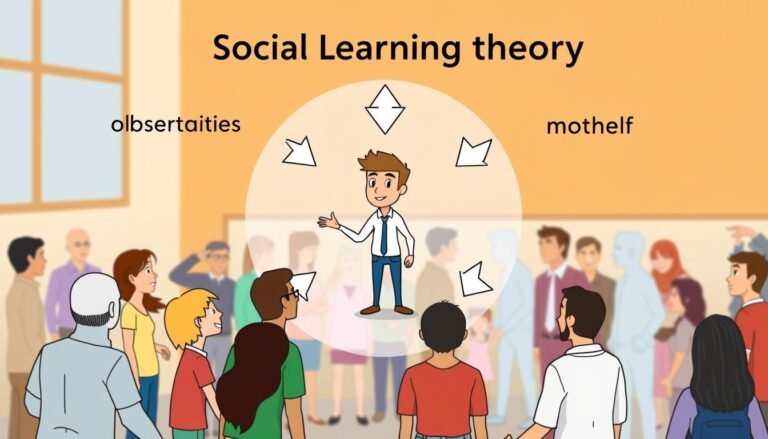Understanding Cognitive Distortions: A Friendly Guide
Ever found yourself stuck in a cycle of negative thoughts? Wondered why your mind seems to play tricks on you? Welcome to the world of cognitive distortions. These are the irrational thoughts that can mess with our judgment and affect our happiness.
Cognitive distortions are negative thinking patterns that can change how we see reality. They often sneak up on us, affecting our feelings and actions without us noticing. In fact, studies show that about 45% of people deal with these distortions regularly.
But there’s hope! Recognizing these thought traps is the first step to breaking free. Whether it’s all-or-nothing thinking or negative filtering, knowing these common mental pitfalls can help you face life’s challenges with a clearer mind.
In this friendly guide, we’ll explore the world of cognitive distortions. We’ll look at how these irrational thoughts develop, their impact on our mental health, and how to challenge and overcome them. So, are you ready to start a journey of self-discovery and mental clarity? Let’s dive in!
What Are Cognitive Distortions and Why They Matter
Cognitive distortions are wrong thoughts that shape how we see reality. They can really hurt our mental health. Aaron Beck first found out about them in the 1960s. Now, we know how important they are in understanding our minds.
The Science Behind Thought Distortions
Beck’s work with depressed patients showed us cognitive biases. He listed five distortions in 1963 and seven in 1979. Dr. David Burns, his student, made these ideas easier for everyone to understand.
| Year | Researcher | Contribution |
|---|---|---|
| 1963 | Aaron Beck | Identified 5 cognitive distortions |
| 1979 | Aaron Beck | Added 2 more cognitive distortions |
| 1980s | David Burns | Popularized cognitive distortions |
Impact on Mental Health and Well-being
Cognitive distortions are linked to bad mental health, like depression and anxiety. They make us think negatively and see things wrongly. Common ones include thinking we know what others are thinking and always expecting bad things to happen.
How Distorted Thinking Develops
Distorted thinking starts as mental shortcuts but can be harmful. It’s hard to change, but CBT and hypnosis can help. Recognizing and fighting these wrong thoughts is crucial for better mental health and a balanced life.
“Cognitive distortions are the lenses through which we view our world. Changing these lenses can dramatically alter our perception and well-being.”
Common Types of Cognitive Distortions
Faulty thought processes shape how we see the world. These unhelpful thinking styles, known as cognitive distortions, can greatly affect our mental health. Studies show that these distortions often start in childhood and can make anxiety, depression, and other mental health issues worse.
- All-or-nothing thinking: Viewing situations in black and white terms
- Overgeneralization: Drawing broad conclusions from single events
- Negative filtering: Focusing solely on negative aspects while ignoring positives
- Mind reading: Assuming others’ thoughts without evidence
- Fortune telling: Predicting negative outcomes to avoid challenges
Other common distortions include magnification, emotional reasoning, and labeling. Using words like “should,” “must,” or “ought” can make us feel guilty or like we’ve failed. Personalization and blame mean blaming ourselves or others for things with many causes.
It’s important to recognize these patterns. Cognitive Behavioral Therapy (CBT) is a good way to deal with them. By spotting and changing these thought patterns, people can lessen their negative effects on mood and actions. Remember, everyone has cognitive distortions sometimes, especially when things get tough.
The Power of Black and White Thinking Patterns
Black and white thinking, also known as polarized thinking or absolutistic thinking, is a common way of thinking. It sees people, things, and actions as either “good” or “bad” with no middle ground. This simple view can affect many areas of life, like relationships and how well you do tasks.
All-or-Nothing Thinking Examples
Dichotomous reasoning often shows up in extreme ways. People might say “always” or “never” to describe things. For example, someone might say, “I always fail at everything” after one mistake. This kind of thinking can make you want to be perfect or avoid tasks.
Breaking Free from Polarized Thoughts
Seeing polarized thinking is the first step to change. Cognitive Behavioral Therapy (CBT) is a good way to tackle these distorted thoughts. Mindfulness meditation also helps by making you more aware of your thoughts and feelings, helping you think more flexibly.
Finding the Gray Areas in Life
It’s important to learn to see the shades of gray in situations. Instead of seeing things as just good or bad, try to find the middle. This can help you have more balanced views and better mental health.
| Mental Health Condition | Relation to Black and White Thinking |
|---|---|
| Borderline Personality Disorder | Characterized by intense feelings and extreme thinking |
| Obsessive Compulsive Disorder | Exhibits black and white thinking as a form of control |
| Narcissistic Personality Disorder | Difficulty seeing middle ground in situations |
If you’re struggling with persistent polarized thinking, getting help from a mental health professional is a good idea. They can teach you ways to manage this thinking and improve your well-being.
Negative Filtering and Mental Traps
Negative filtering changes how we see the world. It’s like wearing dark glasses that only show us the bad. This can make us feel anxious and depressed.
Mental filtering happens when we only notice the negative. For instance, we might remember one bad comment but ignore many good ones. This can really hurt our happiness.
- 64% of individuals taking anxiety screenings reported feeling afraid frequently
- 50% of those screened for depression felt like failures almost daily
- 85% of worries never materialize, yet we often dwell on them
It’s important to recognize these mental traps. By noticing the good, we can see things more clearly. Our thoughts aren’t always true. By challenging negative thoughts and being thankful, we can overcome these traps.
| Cognitive Distortion | Description | Impact |
|---|---|---|
| Selective Abstraction | Focusing on a single negative detail | Skewed perception of reality |
| Discounting Positives | Ignoring positive experiences | Increased feelings of failure |
| Mental Filtering | Only seeing negative aspects | Heightened anxiety and depression |
Practical Strategies to Challenge Distorted Thoughts
Cognitive restructuring is a powerful tool to change our thinking patterns. It’s often used in cognitive behavioral therapy (CBT). This method helps us see negative events in a new light and develop balanced views.
Thought challenging is key to tackling various cognitive distortions. These include mind reading, catastrophizing, and overgeneralizing. By questioning these, we can break free and see things more clearly.
The goal is balanced thinking. It’s not about replacing negative thoughts with overly positive ones. Instead, it’s about seeing things as they really are. Tools like journaling and mindfulness can help. Getting help from a CBT-trained psychologist can also be very helpful.
Source Links
- CBT for Cognitive Distortions
- Microsoft Word – CHECKLIST OF COGNITIVE DISTORTIONS.docx
- Cognitive Distortions: Understanding and Overcoming Negative Thoughts with a Psychologist in Melbourne
- Cognitive Distortions: Unhelpful Thinking Habits | Psychology Tools
- Thinking Traps: 12 Cognitive Distortions That are Hijacking Your Brain
- 10 Common Types of Cognitive Distortions | Skyland Trail
- 15 Cognitive Distortions to Blame for Your Negative Thinking
- How Does Black-and-White Thinking Affect Your Mood and Behavior?
- How to Recognize and Break Free from Black and White Thinking
- Black And White Thinking: Top 3 Strategies To Overcome
- Getting Out Of Thinking Traps
- Thinking Traps: What Are They (& How to Overcome Them)
- 15 Common Cognitive Distortions — Mind My Peelings
- Challenging Cognitive Distortions with Cognitive Restructuring
- How to Identify and Challenge Distorted Thinking — Dr. Madeline Polonia








